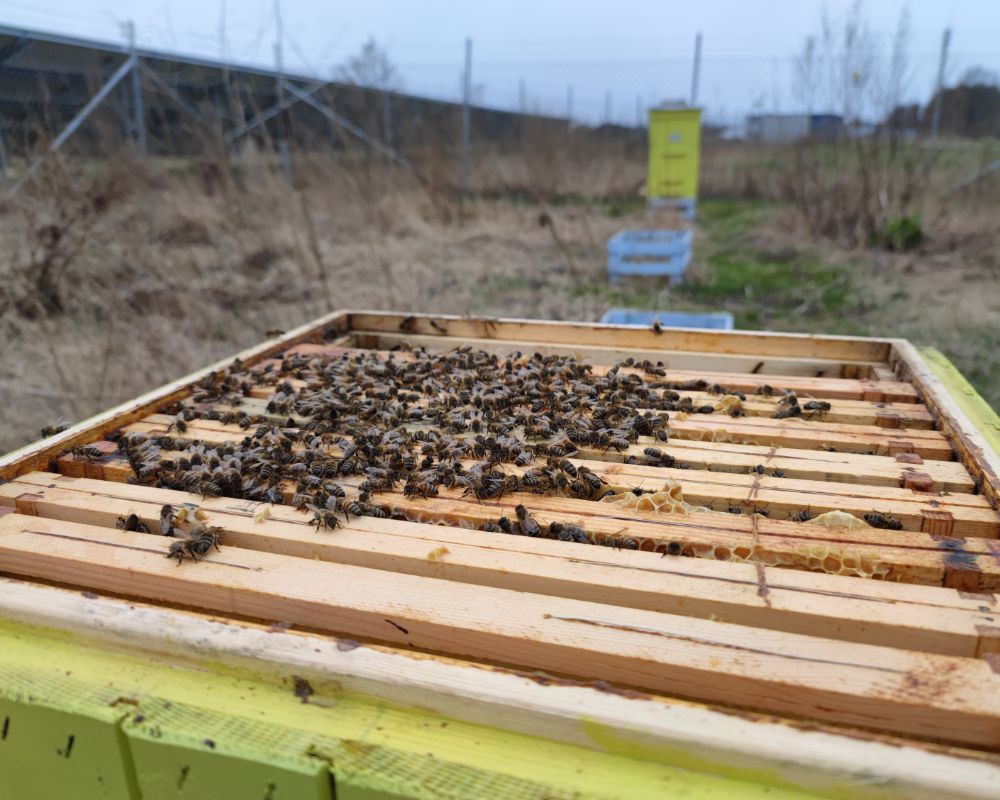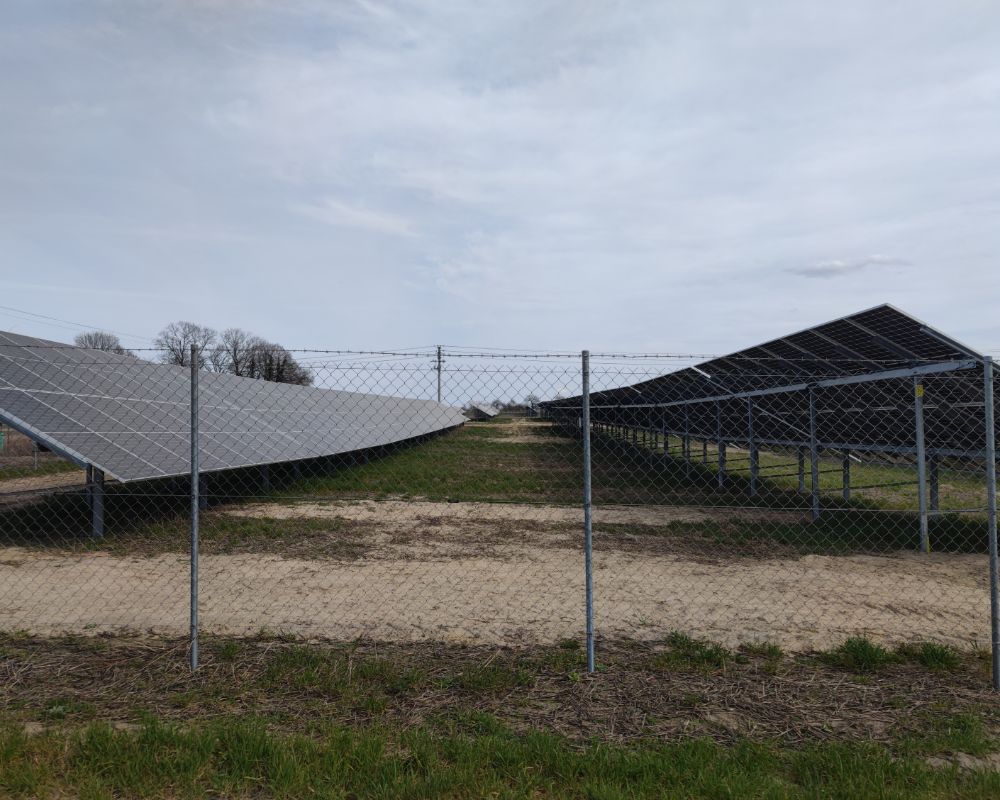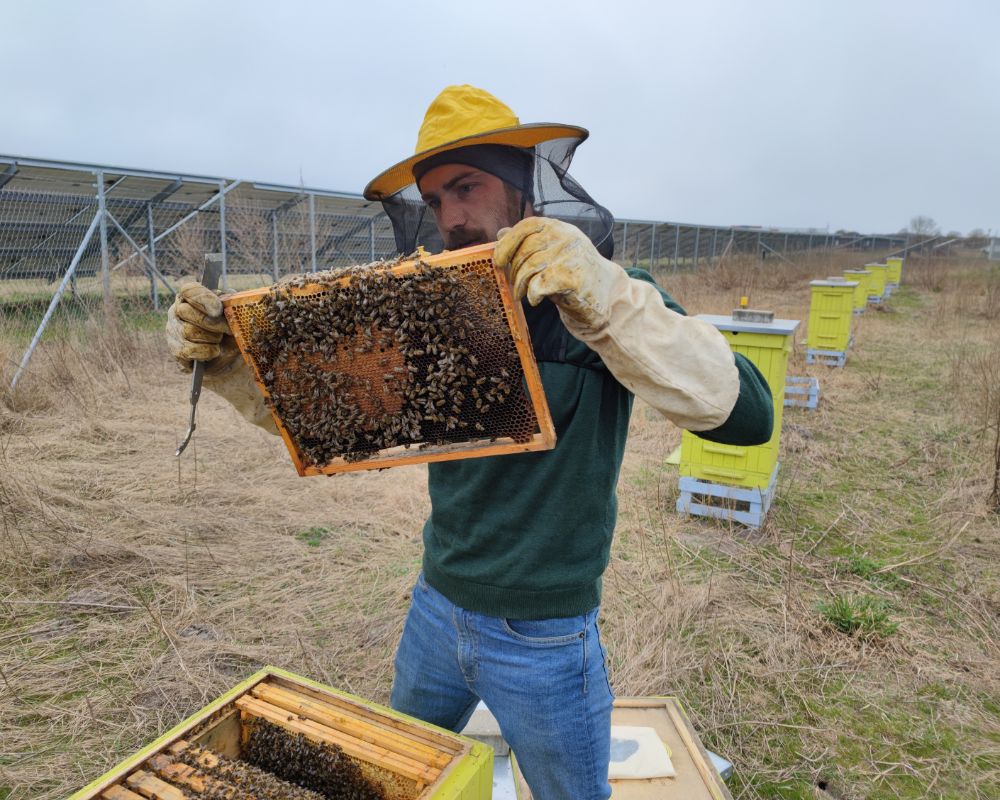- Polenergia Group
- Environment
- Society
- Management
Does the production of energy in photovoltaic farms have a negative impact on the natural environment? No, quite the contrary! Environmental monitoring carried out on large-area photovoltaic farms belonging to the Polenergia Group shows that the areas covered with solar panels are characterized by a higher natural wealth than before. Moreover, our actions enrich the biodiversity of the area around the photovoltaic installations and strengthen the ecosystem services of multi-hectare areas.

The first Polenergia’s photovoltaic projects in the Sulechów region were commissioned in 2019. They were created in areas that, although intensively used, were not as attractive as an agricultural land. These were open, monoculture farming lands interspersed with several drainage ditches and two small artificial ponds. The basis were segetal, ruderal habitats typical of the initial stages of overgrowing. The species composition of such communities was mainly built by spontaneously appearing grass species and a mosaic of flower species with low soil requirements, e.g. bird’s-foot-trefoil, sea mayweed, tansy, and chamomile. However, a lot has changed since the installation of photovoltaic panels what represents an advantage for the nature.
Due to technological reasons (row spacing, access roads), structures consisting of 30,000 PV panels with a total capacity of 8 MW occupy only half of the entire 16-hectare area of the Sulechów I investment. Therefore, in 2020, we decided to give back undeveloped land to nature and create there the so-called honey-bearing flower meadows.
In April 2022, after finishing the construction of further complex of the Sulechów II and Sulechów III Photovoltaic Farms, more flower meadows and pasture mixtures were sown on an area of 40 hectares. The diversification of land use that we have introduced means there is a higher species richness of the habitat. From pasture communities with clover, alfalfa and phacelia cultivation, to rich flower meadows composed of 20 different species of flowers and perennials. In this way, Polenergia not only produces green energy, but also contributes to the creation of a multi-hectare acreage that strengthens the local biodiversity and constitutes a food base for wild pollinators. Our farm is also a place of refuge and breeding for many species of birds and mammals, including strictly protected species.
Thanks to environmental monitoring carried out in the winter period at the turn of 2021-2022, we know that 6 species of mammals were found in the Sulechów Photovoltaic Farms, including weasels, hares, partridges and foxes which are under partial protection. Ornithologists confirmed the presence of 30 species of birds. Among them, 4 species are under partial protection, 26 are strictly protected, including 2 species listed in Annex I of the Natura 2000 Birds Directive. The most numerous are, among others: buzzards, yellowhammer, corn buntings and kestrels.
Monitoring shows a clearly higher activity of birds of prey within the farm boundaries compared to the adjacent open agricultural land. This is probably due to the relatively high density of rodents and low vegetation, which increases the success of hunting. Within the boundaries of the photovoltaic farms, numerous burrows and corridors of rodents, mole feeding grounds as well as fox and mustelids tracks and faeces were recorded. That means the area of our photovoltaic installations is not an isolated space inaccessible to animals. On the contrary, it is reach in diverse species and has a potentially high impact on the region’s ecosystem.
Bees and pollinating insects are crucial for the functioning of ecosystems and food production. Intensive agriculture with the use of plant protection products and monoculture crops are obstacles to their development. Activities undertaken by Polenergia are aiming for increasing the insects’ species diversity by creating various development sites adapted to their needs.
At the beginning of 2020, Polenergia set up a photovoltaic apiary in Sulechów consisting of 10 hives. The apiary is under the constant care of a beekeeper who knows the local conditions of beekeeping management. However, we take care not only of the honey bee used in the beekeeping industry, but also of other pollinating insects. In order to provide space for the development of solitary bees, special houses made of wood, straw and clay have been placed in the area of photovoltaic farms. It will be a great place for the development of wild pollinating insects, which are so important for the environment. In addition, during the construction of the farm, we collected stones and built special mounds from them. Stones mixed with reeds and branches will be a great place for bumblebee development!
Bees and pollinating insects will have an abundance of nourishment thanks to the diversified form of land use and the abundance of flowers that bloom at different times. Importantly, pollinators are safe in our photovoltaic farms in Sulechów. No one will use chemical sprays or pesticides in this area.
Large-scale solar farms are a great place to help many species of animals, and above all, the pollinating insects that our lives depend on. This opportunity related to the reconstruction of meadow ecosystems and the promotion of biodiversity cannot be wasted. That is why we share our good practice and the effects of environmental observations on our solar farms. The enormous potential of new photovoltaic projects in Poland gives the opportunity to create similar enclaves of biodiversity throughout the country.


